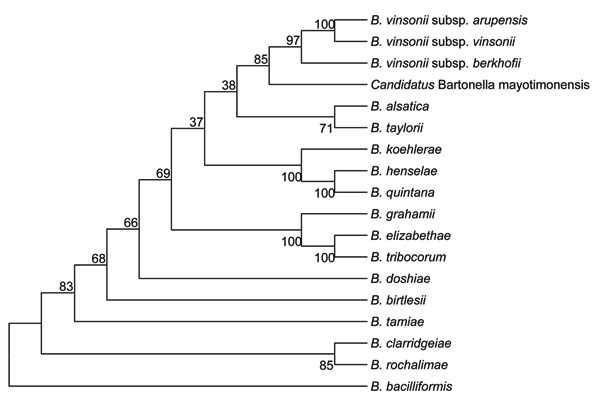Volume 16, Number 3—March 2010
Dispatch
Candidatus Bartonella mayotimonensis and Endocarditis
Figure 2

Figure 2. Phylogenetic tree showing the position of Candidatus Bartonella mayotimonensis among members of the genus Bartonella based on comparisons of concatenated sequences of the 16S rRNA gene, the citrate synthase gene gltA, the RNA polymerase β-subunit gene rpoB, the cell division gene ftsZ, and the 16S–23S rRNA internal transcribed spacer region sequences. The tree was constructed by using the neighbor-joining method and a maximum-likelihood–based distance algorithm. Numbers on branches indicate bootstrap values derived from 500 replications.
Page created: December 14, 2010
Page updated: December 14, 2010
Page reviewed: December 14, 2010
The conclusions, findings, and opinions expressed by authors contributing to this journal do not necessarily reflect the official position of the U.S. Department of Health and Human Services, the Public Health Service, the Centers for Disease Control and Prevention, or the authors' affiliated institutions. Use of trade names is for identification only and does not imply endorsement by any of the groups named above.